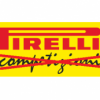It's always been mentioned that the three fuel thirsty tracks in F1 are Barcelona, Bahrain and Montreal. But why? What characteristics of these circuits make them fuel thirsty?
Is it because of high top speeds (Bahrain & Montreal)? Monza and Silverstone have high top (and average) speeds but aren't thought of as fuel thirsty.
Is it because of fast corners (Barca)? Suzuka and Silverstone have lots of fast corners but aren't thought of as fuel thirsty.
Is it because of chicanery, big braking and hard accelerations (Montreal)? Monza and Singapore are also stop-start but aren't thought of as fuel thirsty.
From my ancient knowledge of physics, mechanics and road autos, I've always thought that cars consume the most fuel when their engines do the most work. I've thought that this happens under hard acceleration and also at vmax. Given this, I would think that tracks like Monza (stop-start) and Monza (vmax) would be top of the list but they aren't.
Can someone please halp?! ![]()


















